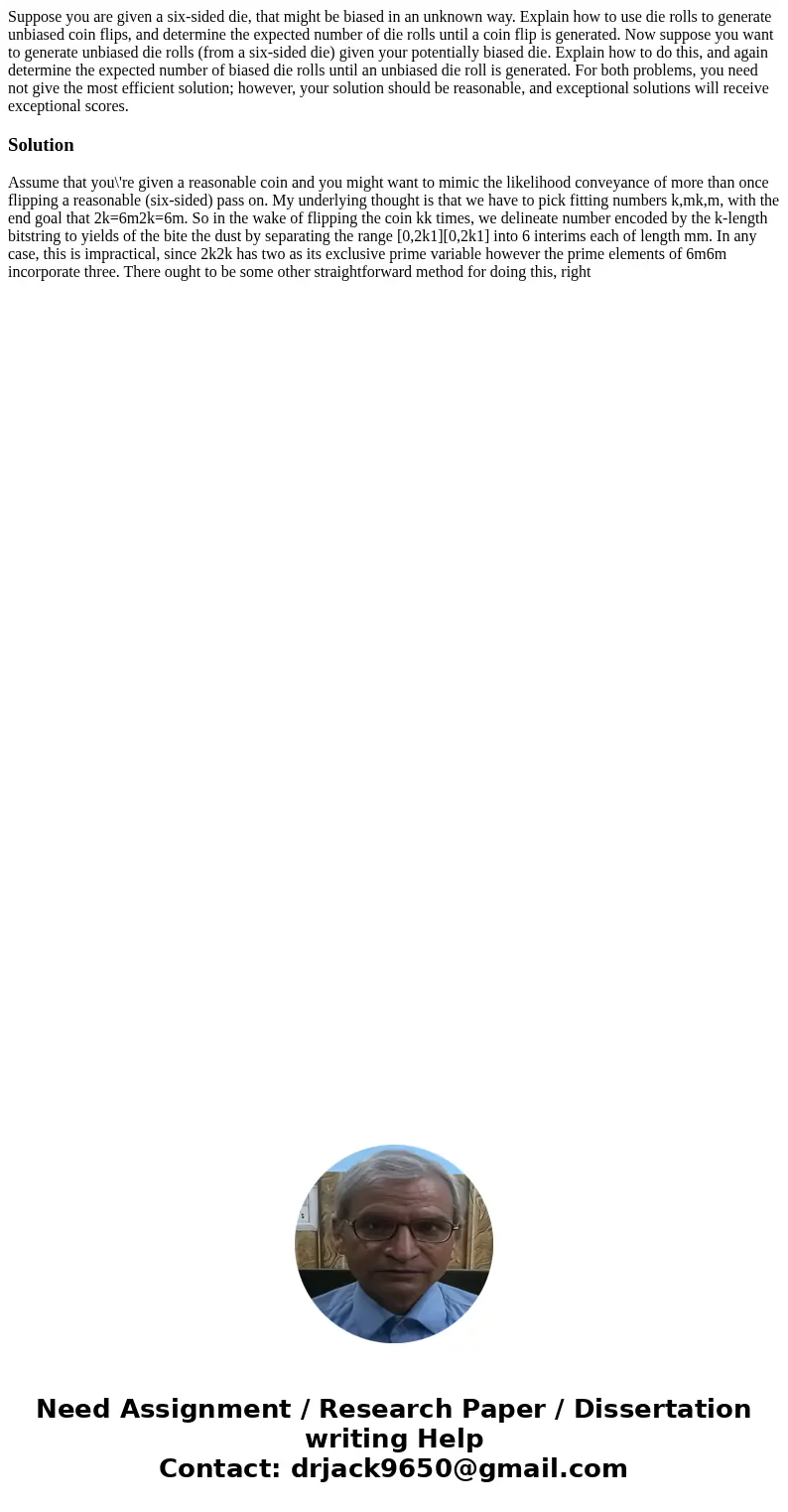Suppose you are given a sixsided die that might be biased in
Suppose you are given a six-sided die, that might be biased in an unknown way. Explain how to use die rolls to generate unbiased coin flips, and determine the expected number of die rolls until a coin flip is generated. Now suppose you want to generate unbiased die rolls (from a six-sided die) given your potentially biased die. Explain how to do this, and again determine the expected number of biased die rolls until an unbiased die roll is generated. For both problems, you need not give the most efficient solution; however, your solution should be reasonable, and exceptional solutions will receive exceptional scores.
Solution
Assume that you\'re given a reasonable coin and you might want to mimic the likelihood conveyance of more than once flipping a reasonable (six-sided) pass on. My underlying thought is that we have to pick fitting numbers k,mk,m, with the end goal that 2k=6m2k=6m. So in the wake of flipping the coin kk times, we delineate number encoded by the k-length bitstring to yields of the bite the dust by separating the range [0,2k1][0,2k1] into 6 interims each of length mm. In any case, this is impractical, since 2k2k has two as its exclusive prime variable however the prime elements of 6m6m incorporate three. There ought to be some other straightforward method for doing this, right

 Homework Sourse
Homework Sourse